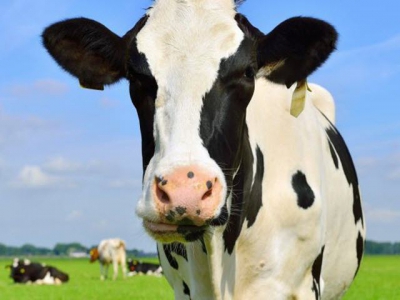Improved method for determining allele frequencies may aid genomic prediction

GLS method with sparse matrices is fast and highly accurate at estimating base generation allele frequencies.
Genomic prediction is the process that computes breeding values using information about alleles across the genome. In genomic prediction, such as with dairy cattle breeding, computed allele frequencies are used for several processes, according to researchers from Wageningen University Research-Animal Breeding & Genomics (WUR-ABG) in the Netherlands.
Many aspects of genomic prediction assume that the allele frequencies are equal to the frequencies in the pedigree founders or "base generation." In practice, the current method calculates allele frequencies from the genotypes available for the current population, mostly because this is convenient and computationally trivial, WUR-ABG researchers M.N. Aldridge, J. Vandenplas and M.P.L. Calus said.
In a new study published in the Journal of Dairy Science, they compared the current method using computed allele frequencies with two methods to compute the base generation allele frequencies in terms of the obtained frequencies and the computing time.
According to an announcement from WUR-ABG, Aldridge et al. simulated a typical dairy population for which the base generation allele frequencies were known. The base generation allele frequencies were estimated using the current method, Best Linear Unbiased Prediction (BLUP) or Generalized Least Squares (GLS) with either dense or sparse matrices. They then compared the accuracy of the estimated allele frequencies with the known frequencies and the computational requirements.
Aldridge et al. showed that the current method is very fast but is the least accurate. The BLUP method was relatively inefficient but highly accurate, the researchers said, while the GLS method with dense matrices was extremely inefficient but was highly accurate. The GLS method with sparse matrices was as efficient as the current method and highly accurate, the researchers said
Aldridge et al. recommended using base generation allele frequencies in genomic prediction that are estimated using the GLS method with sparse matrices.
Source: Wageningen University & Research, which is solely responsible for the information provided and is wholly owned by the source. Informa Business Media and all its subsidiaries are not responsible for any of the content contained in this information asset.
Có thể bạn quan tâm
 New high-quality reference genome published for water buffalo
New high-quality reference genome published for water buffalo Water buffalo considered economically important livestock species around the world.
 Healthy pastures may limit nitrous oxide effects from grazing cattle
Healthy pastures may limit nitrous oxide effects from grazing cattle When cow urine falls on degraded land, it releases more nitrous oxide than when absorbed by healthy pasture.
 Dutch dairy sector comes in below phosphate reduction targets
Dutch dairy sector comes in below phosphate reduction targets In 2018, the stats showed that phosphate production in the Netherlands was down by 8.3m kg year-on-year, a decline by 5%.